- Location and arrival
- The Kiskunság national park
- Photographic possibilities
- Among herons in Hungary
- The fish ponds at Rétimajor
- Hortobágy national park
- Bee-eaters, the colorful birds of Hungary
- Long-tailed tits, the kings of nest-building
- Photographing from a boat.
- Hungary, land of marsh harriers
- The equipment
- General travel tips
- Conclusion
- Download maps from Hungary
After my overall seventh visit to Hungary, this travelogue is slowly taking shape, although I am far from having gotten to know the country in detail. All of my trips
to Hungary took place in spring and are therefore only snapshots of certain areas.
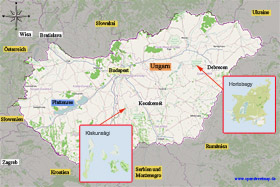
For better orientation, I have added an overview map on the left (for more details, please click on the map on the left). Although Hungary has many
national parks, when searching for suitable photo locations, you often come across two national parks. One of these national parks is Kiskunság and the other is Hortobágy
National Park. While Kiskunság National Park is located about 100km south of Budapest, Hortobágy National Park can be reached about 180km east of Budapest.
(back to the top)
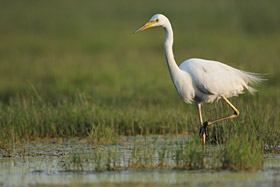
The Kiskunság National Park, also known as Kiskunsági Nemzeti Park, is essentially made up of several small national parks that are not directly connected to
each other
(see map).
However, since the national parks in Hungary are heavily regulated - for example, you are not allowed to set up a camouflage tent and you must stay on the main paths - the areas around
the individual parks offer better opportunities. Ultimately, the animals do not distinguish between park boundaries, so there are plenty of photo opportunities at the borders of the
individual parks. If you find a suitable wet meadow, a friendly nod and a pointing finger to your camera equipment are often enough to get permission to photograph from the owner of
the meadow.
In particular, grey herons are often found in the wet meadows. The photo of the grey heron was taken directly in the meadow, benefiting from the low perspective.
(back to the top)
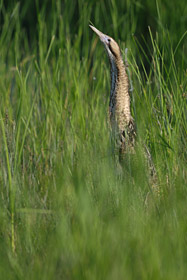
One often hears that Hungary, with its sparsely populated land, offers a lot of nature and thus animals find particularly good living conditions here. While this
is true in principle, even in this country, if one does not seek out and find the specific habitats, one will not be able to successfully pursue wildlife photography in Hungary. When
considering the flight distances of birds, I even found them to be greater than, for example, at Lake Neusiedl in neighboring Austria. Nevertheless, it is already a great experience to
hear a golden oriole from one direction, the characteristic call of a hoopoe from the other direction, and bee-eaters flying overhead in the wild. All of this can be experienced at
several locations in Hungary. But seeing a bird and photographing it well are, as is well known, two different things. While I was able to spot blue rock thrushes frequently,
unfortunately they mostly sat at considerable heights on power lines. However, I did have some luck with the bittern here. Bitterns are on the red list of endangered species. Since
bitterns live a hidden life in the reeds and are more active at night, encounters are very rare.
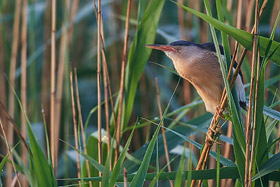
One has good chances of capturing some shots of little bitterns in the town of Berekfürdö, which is located about 30 km south of Tiszafüred. Near the campsite of
Berekfürdö, there is a long pond where some little bitterns make their home. However, one should be there in person at the right time in the spring, as the little bitterns usually only
present themselves regularly to photographers during their breeding season by climbing up the reeds and becoming visible. Most of the time, you will only hear the little bitterns, but
their call, with a dull "wroh," is very characteristic.
(back to the top)
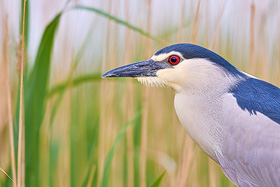
If one wants to see and photograph the shy night herons, there is probably no better country in Europe for these nocturnal companions than Hungary. Even though
night herons, as the name suggests, almost exclusively hunt at night, one still has relatively good chances of encountering them during the day. Night herons like to eat large amounts
of fish, which is why these wading birds are often found at fish ponds. The fact that fish pond operators do not have night herons as their best friends is a matter of course and is
probably also the reason for the animals' shyness, as unfortunately, night herons are often hunted at fish ponds.
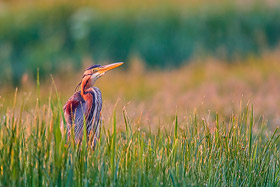
In addition to night herons, one also has good chances of encountering grey herons, great egrets, little egrets, and purple herons. Grey herons are the most common
and can often be observed hunting in the wet meadows. Little egrets and purple herons are also usually found in one of the many wet meadows. When photographing herons, I recommend using
appropriate camouflage, as it will otherwise be almost impossible to photograph the herons up close and at eye level. While there are occasional encounters with less shy herons, this is
the exception. Even from a car, it is difficult to photograph the herons due to their shyness. I have had the best experiences with a camouflage cloak when photographing herons.

One of these pond systems in Hungary is the fish ponds of Rétimajor. The pond system is located about 50 km east of Lake Balaton and about 25 km west of the Danube
city of Dunaföldvár (
see map). The entire pond
system consists of over 30 ponds of different sizes with a total area of over 1000 hectares. The fish ponds are privately owned and primarily serve the needs of anglers. If you want to
enter the pond system, you should purchase a day pass (about 10 euros) at the visitor center. You can move between the individual ponds by car, on more or less good roads, and thus have
the opportunity to take photos from the car. There are large numbers of birds at the fish ponds, especially silver herons, night herons, rails, white and black storks. The catch is that
the environment is often anything but photogenic, as the birds often reside in some concrete pond systems, or some supply lines are visible in the picture. However, there are always
opportunities to catch a night heron in a tree, for example.
(back to the top)
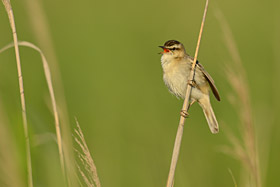
The Hortobágy National Park is located in the east of Hungary, approximately 150 km east of Budapest as the crow flies
(
see map). The Hungarian name is "Hortobágyi
Nemzeti Park" and with its 82,000 hectares it is Hungary's largest continuous national park. The combination of steppe landscape and artificially created fish ponds provides ideal conditions
for many, some very rare, bird species. The fish pond system has a total size of 6,000 hectares and is therefore unique in the world! Anyone who wants to enter the national park will find a
discreet note at all entrances suggesting that they purchase a ticket at one of the
sales points.
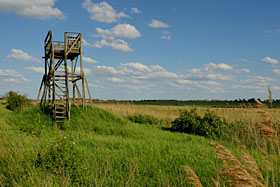
To the northwest of Hortobágy are the Hortobágy-Halasto fish ponds, which have a total size of approximately 2,000 hectares. It is possible to walk between the
individual ponds and there are several
observations towers
available.
This could be a worthwhile location for aerial shots of herons and marsh harriers. Another pond area is located approximately 3 km southwest of Hortobágy-Halasto, which is the Pince-lapos-tó
fish pond. Here there is a small observation tower located in the middle of the reeds that can accommodate two photographers. Again, it may be worth keeping an eye out for passing marsh
harriers or herons.
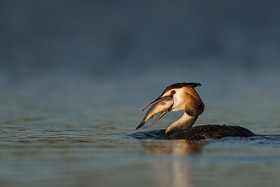
However, the fish ponds of Hortobágy are privately owned and have nothing to do with the Hortobágy National Park. Therefore, permission to enter the national park does
not permit entry to the ponds, which are operated by a fishing company. During our last visit, it was not possible to obtain this specific permission, even with good will, as the external
office of the fishing company was no longer in operation, the Hortobágy National Park Center could not help us, and we did not want to undertake the long journey to the company's headquarters
in Debrecen. Additionally, it was entirely unclear whether this specific permit was available for purchase in Debrecen. So, it is up to individuals to decide how to deal with this situation,
but from my experience, the company is primarily concerned about the theft of fish and tolerates photographers in the vicinity of the fish ponds.
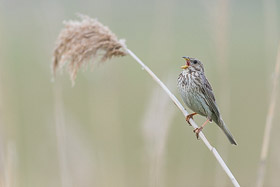
At the intersection of Route 33 and the side road to the small town of Nagyiván, there is a small
bee-eater colony
that is not inhabited every year. If you are already there, it is worth driving along the
road that leads to Nagyiván, even though this
route is a real challenge for both people and vehicles due to the many potholes. There are many songbirds to discover on both sides of the road to Nagyiván.
(back to the top)
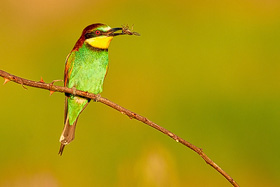
One of the most popular bird subjects are the colorful bee-eaters, which are quite numerous in Hungary. The sociable bee-eaters are usually found in colonies and
come to Hungary from their winter quarters in the month of May. In my experience, the best time to photograph these birds is from the end of May to early June, when the bee-eaters have
chosen a nesting place and begin courtship displays. Bee-eaters are usually found in abandoned sand pits in Hungary, as they prefer steep slopes where they can dig their nesting holes.
When bee-eaters have just returned from their winter quarters, they are in the exploration phase and are extremely cautious and vulnerable to disturbance. A few weeks later, the
situation in the colony becomes more relaxed and the bee-eaters can be seen sitting on prominent branches in groups, making them easy to photograph from a hide.
(back to the top)
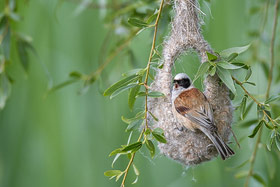
The Penduline Tit gets its name from its characteristic nest. During the breeding season, this species of tit builds a bag-shaped nest that is about 17 cm high. The intricate nests are
built anew each year, with the male typically building the nest first and hoping that a female will move in to complete the construction together. Sometimes, however, the nest is simply not
good enough for a female, and the male must build a new one in the hopes of attracting a mate. Penduline Tits are widespread in the Hortobágy region, where they find ideal conditions for
breeding. Nest-building usually takes place in a willow tree, and the nest almost always faces a body of water. If one wants to photograph the Penduline Tit at the nest, they must first
locate a suitable nest in May. However, these nests are often built at great heights and may not be suitable for photography, requiring one to continue searching.
In general, photographing nests is a very delicate matter and that is why I fundamentally reject it. However, the Bearded Tit is a somewhat shy bird and is not disturbed if photographed from
a distance using focal lengths around 600 mm. Often, even camouflage is not necessary to observe the Bearded Tit during nest building.
(back to the top)
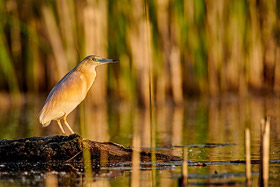
If you want to experience the Hungarian birdlife from a boat, I recommend the nature reserve along the Tisza River between Tiszafüred and Poroszló
(
see map). The Tisza is a tributary of the Danube
and the area is located about 30 km west of the Hortobagy National Park. Small motorboats can be rented on the side of Tiszafüred as well as on the side of Poroszló, which are also popular
among many anglers. By the way, no driver's license is required for renting these small motorboats. The boats have a very shallow draft, so you can practically navigate anywhere. If you
are traveling with a large telephoto lens, you can also set up a tripod on the boat and then quietly cruise along the shore, hoping that the birds will stay put ;-)
(back to the top)
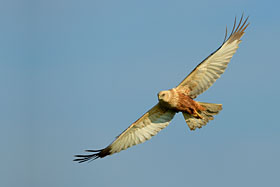
Marsh harriers are quite common in Hungary, especially in the Hortobágy region where there are about 2,000 breeding pairs. There are often opportunities to photograph
marsh harriers from a car or from the described observation towers. I found marsh harriers in eastern Hungary to be slightly less shy than they are here, by comparison.
(back to the top)
Due to the mentioned flight distances, the more focal length the better. I would recommend a telephoto lens with a focal length of 500-600mm, which can be extended with
a converter if necessary, for wildlife photography in Hungary. As some photos will be taken from a car, a car window mount or a beanbag should not be missing. Furthermore,
I recommend bringing a camouflage tent and camouflage nets, as there are certainly good opportunities to use them outside of the national parks. Although I hardly had the
opportunity for landscape photography during my stay, it may be worth packing a smaller focal length lens for this purpose.
(back to the top)
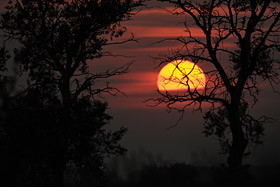
Although I generally limit my travel reports on this website to the topic of nature photography, I would like to make a small exception with this report because Hungary
is not as well-known as a travel destination for many people. As a nature photographer, you are unlikely to seek accommodation in the traditional holiday resorts, such as
Lake Balaton, where the infrastructure is different from that in more rural areas.
As Hungary is a member state of the European Union but still uses the Forint as its currency, the question of currency exchange arises. Generally, exchanging Euros for
Forints in Hungary is cheaper. At the borders, there are opportunities for currency exchange where one can also purchase the obligatory highway vignette. Otherwise, even
in smaller villages, there are almost always ATMs where one can withdraw Hungarian Forints using their debit card. The price level in Hungary is generally noticeably lower
than in Germany. However, language barriers must be overcome because locals in rural areas usually do not speak English. If you are lucky, you may come across older
residents who speak a little German, but this is really the exception. Since the Hungarian language is extremely complicated and one can hardly derive any words,
communication is limited to hand and foot gestures and perhaps a dictionary.
Otherwise, the infrastructure around the Kiskunság or Hortobágy National Park is quite well developed. There are plenty of accommodations, gas stations, supermarkets, and
the mobile phone network has a wide coverage.
(back to the top)
A photo trip to Hungary is definitely worth it in my opinion. However, if you prefer to search for your own photo motifs, like I do, and don't want to rely on rented hides,
some patience and research are required. The conditions can change every year, where there was a colony of bee-eaters in the previous year, there may be emptiness the following
year. So it's important to go on a discovery tour and plan accordingly. The nature experience is unique in any case, as where else can you experience a passing Great Bustard,
see Purple Herons, Red-footed Falcons, and hear the sounds of Orioles and Hoopoes all in one day?
(back to the top)
You can download maps of Hungary here. To view and print them, you will need an Acrobat Reader. The maps are intended for rough orientation purposes.
 maps of Hungary
maps of Hungary
written: July 2011, (author: Olaf Juergens)
updated: July 2022
 print version
print version



















